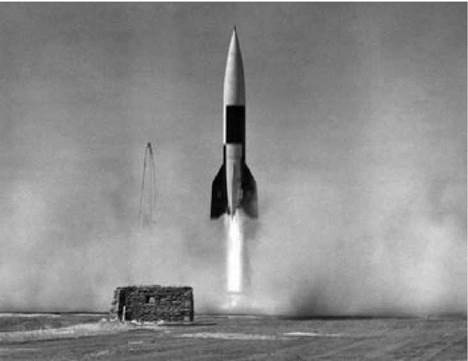First Steps in. Hypersonic Research
1 oday’s world of high-speed flight is international, with important contributions having recently been made in Japan, Australia, and Russia as well as in the United States. This was even truer during World War II, when Adolf Hitler sponsored development programs that included early jet fighters and the V-2 missile. America had its own research center at NACA’s Langley Memorial Aeronautical Laboratory, but in important respects America was little more than an apt pupil of the wartime Germans. After the Nazis surrendered, the U. S. Army brought Wer – nher von Braun and his rocket team to this country, and other leading researchers found themselves welcome as well.
|
Liftoff of a V-2 rocket. (U. S. Army) |
Some of their best work had supported the V-2, using a pair of tunnels that operated at Mach 4.4. This was just short of hypersonic, but these facilities made a key contribution by introducing equipment and research methods that soon found use in studying true hypersonic flows. At Peenemunde, one set of experiments introduced a wind-tunnel nozzle of specialized design and reached Mach 8.8, becoming the first to achieve such a speed. Other German work included the design of a 76,000-horsepower installation that might have reached Mach 10.
The technical literature also contained an introductory discussion of a possible application. It appeared within a wartime report by Austria’s Eugen Sanger, who had proposed to build a hypersonic bomber that would extend its range by repeatedly skipping off the top of the atmosphere like a stone skipping over water. This concept did not enter the mainstream of postwar weapons development, which gave pride of place to the long-range ballistic missile. Still, Sanger’s report introduced skipping entry as a new mode of high-speed flight, and gave a novel suggestion as to how wings could increase the range of a rocket-powered vehicle.
Within Langley, ongoing research treated flows that were merely supersonic. However, the scientist John Becker wanted to go further and conduct studies of hypersonic flows. He already had spent several years at Langley, thereby learning his trade as an aerodynamicist. At the same time he still was relatively young, which meant that much of his career lay ahead of him. In 1947 he achieved a major advance in hypersonics by building its first important research instrument, an 11- inch wind tunnel that operated at Mach 6.9.











